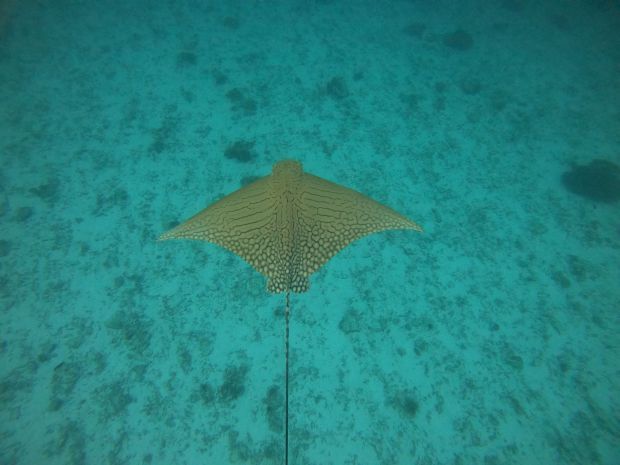 KOTA KINABALU: A Sabah-led international research has helped shed light on the rare eagle rays, using mainly citizen science and social media.
KOTA KINABALU: A Sabah-led international research has helped shed light on the rare eagle rays, using mainly citizen science and social media.
According to the Sabah Shark and Ray Association (SSRI), this international study, led by Universiti Malaysia Sabah (UMS), saw the identification of a total of 46 eagle rays.
From the 53 reports of the rare species the team found online, the 46 identified included those in Palau, the Seychelles and South Africa, representing the first confirmed reports of the species in these countries, said SSRI.
It said that the study also found that many of the sighting occurrences were in Marine Protected Areas (MPAs), highlighting the importance of these MPAs in shark and ray conservation.
SSRI said although there were no sightings of the ornate eagle ray documented on social media from Sabah, the species has historically been recorded in state fisheries.
Its current status in the state is unknown, although once occasionally landed in Sabah, no reports have been documented in the last 20 years, it said.
“The ornate eagle ray is a large and easily identifiable ray, and its distinct back pattern of stripes and reticulated spots make the species well suited for a citizen science-based study approach,” said Gonzalo Araujo, Associate Research Fellow at UMS.
“Citizen science, where the public contributes to data collection, is a powerful tool that can assist many projects”, he said, adding that people’s photos on social media platforms, such as Facebook, are proving incredibly useful for monitoring rare species, especially in remote places.
He said in Sabah, for example, citizen science is already helping scientists understand the enigmatic whale shark, providing evidence of how its movement to and from neighbouring areas.
Araujo said the most notably of such research was in late 2019 when a diver’s video of a whale shark at Pulau Sipadan off Semporna was used to confirm the first documented movement of a whale shark between Philippines and Malaysia, as the shark had previously been identified in south Cebu, Philippines.
“It is interesting that many of the reports of ornate eagle rays found on social media were within iconic Marine Protected Areas, such as Ningaloo Reef and the Great Barrier Reef in Australia, and Cagayancillo reef in the Philippines – just like the whale shark at Pulau Sipadan in 2019,” he said.
“The effectiveness of MPAs to conserve species like the ornate eagle ray, and other mobile species, is highly complex, yet it is encouraging that these species are present in these areas, and that citizen science can be a powerful tool to help monitor them,” he added.
(13 December 2020)
An ornate eagle ray, showing the distinct back pattern of stripes and reticulated spots. These beautiful, yet rare, rays can grow up to 240cm from wing tip to wing tip. (Credit: Jacinta Shackleton).


